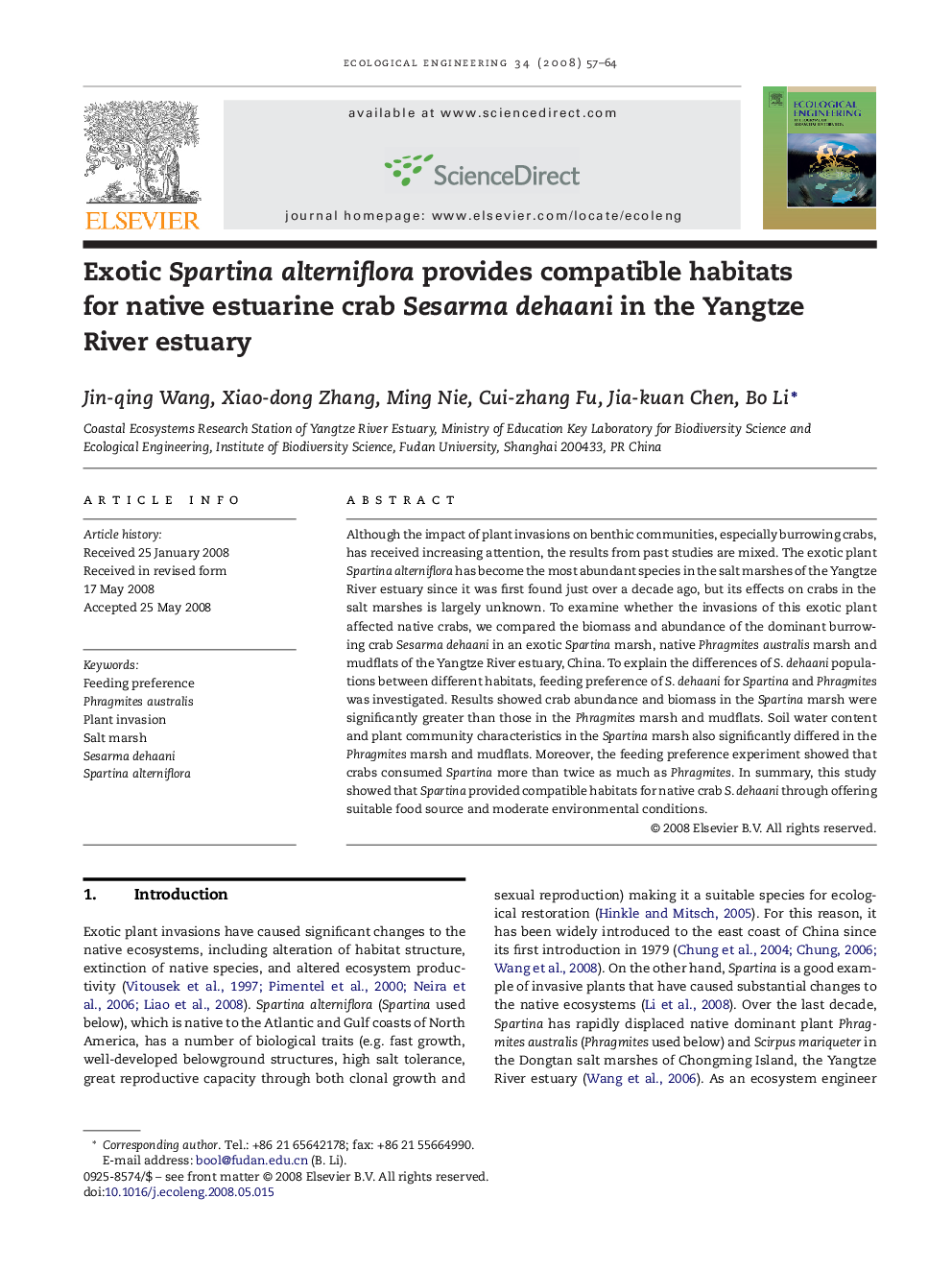| Article ID | Journal | Published Year | Pages | File Type |
|---|---|---|---|---|
| 4390679 | Ecological Engineering | 2008 | 8 Pages |
Although the impact of plant invasions on benthic communities, especially burrowing crabs, has received increasing attention, the results from past studies are mixed. The exotic plant Spartina alterniflora has become the most abundant species in the salt marshes of the Yangtze River estuary since it was first found just over a decade ago, but its effects on crabs in the salt marshes is largely unknown. To examine whether the invasions of this exotic plant affected native crabs, we compared the biomass and abundance of the dominant burrowing crab Sesarma dehaani in an exotic Spartina marsh, native Phragmites australis marsh and mudflats of the Yangtze River estuary, China. To explain the differences of S. dehaani populations between different habitats, feeding preference of S. dehaani for Spartina and Phragmites was investigated. Results showed crab abundance and biomass in the Spartina marsh were significantly greater than those in the Phragmites marsh and mudflats. Soil water content and plant community characteristics in the Spartina marsh also significantly differed in the Phragmites marsh and mudflats. Moreover, the feeding preference experiment showed that crabs consumed Spartina more than twice as much as Phragmites. In summary, this study showed that Spartina provided compatible habitats for native crab S. dehaani through offering suitable food source and moderate environmental conditions.
